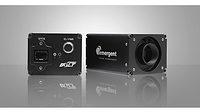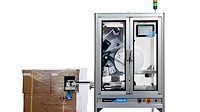TECH FLASH
Machine vision and the automated warehouse
Highly automated warehouses can increase efficiencies with technologies underpinned by machine vision systems

Increasingly complex and difficult sorting tasks in warehouses and distribution centers have led some to adopt advanced storage, retrieval and conveying systems. According to a recent report by ARC Advisory Group, palletizing robotics, autonomous forklifts, tracking systems and scanning tunnels have seen an upswing in adoption as lower system prices, increased processing capabilities and ease of deployment have made them more attractive.
In many cases, these are supported by machine vision systems, which utilize a combination of cameras, lenses and external lighting to capture a picture of an object or scene. “Once acquired, the system processes the object image using specialized vision algorithms developed to analyze edges, shapes and other specific characteristics,” says ARC.
According to the report, while machine vision was at first primarily used in the semiconductor and electronics markets, material handling machinery handling now accounts for nearly 10 percent of the machine vision market.
Sustainability initiatives are one reason. For example, warehouses that use 1-D barcodes and want to reuse cartons multiple times are unable to ensure traditional laser scanners will scan the correct barcode. Machine vision systems, on the other hand, are able to choose and read the correct barcode while allowing greater variation for poor printing or barcode damage.
Additionally, machine vision systems enable automated handling conveyance systems to be more tolerant of size variations, according to ARC. Through the use of high-speed vision arrays employing multiple cameras and laser scanning technology, packages are organized by volumetric size in the scanning tunnel preceding the cross-belt. Vision systems may also be used to detect deformities and bulges in packages, and can help operators avoid overpaying for freight by ensuring appropriate sized shipping boxes and containers are chosen.
ARC advises seeking out integrators with experience in your market when considering machine vision, given the importance of proper integration. As growing shipping volumes, increasing numbers of SKUs and the emergence of e-commerce fuel growth in material handling, the implementation of a machine vision system could pay dividends for many food and beverage warehouses and distribution centers.
Looking for a reprint of this article?
From high-res PDFs to custom plaques, order your copy today!





